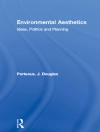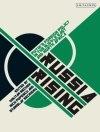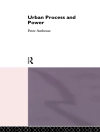Numerical data are everywhere. Charts and statistics appear not just in geography journals but also in the media, in public policy, and in business and commerce too. To engage with quantitative geography, we must engage with the quantitative methods used to collect, analyse, present and interpret these data.
Quantitative Geography: The Basics is the perfect introduction for undergraduates beginning any quantitative methods course. Written in short, user-friendly chapters with full-colour diagrams, the book guides the reader through a wide range of topics from the basic to the more advanced, including:
- Statistics
- Maths
- Graphics
- Models
- Mapping and GIS
- R
Quantitative Geography: The Basics is the ideal starting point for understanding and exploring this fundamental area of Geography.
Daftar Isi
PART 1: ABOUT QUANTITATIVE GEOGRAPHY
Introducing Quantitative Geography
The Use and Abuse of Statistics
PART 2: FOUNDATIONS OF QUANTITATIVE GEOGRAPHY
Principles of Statistics (or, how statistics work)
Some Maths and Notation
Descriptive and Inferential Statistics
Statistical Testing, statistical significance and why they are contentious
PART 3: DOING QUANTITATIVE GEOGRAPHY
Data Presentation and Graphics
Mapping and GIS
Looking at Relationships and Creating Models
Multiple regression and geography
Analysing Geographical Patterns and Differences
An Introduction to R
Tentang Penulis
Richard Harris is Professor of Quantitative Social Geography at the School of Geographical Sciences, University of Bristol. He is the lead author on two textbooks about quantitative methods in geography and related disciplines: Statistics for Geography and Environmental Science (Prentice Hall, 2011) and Geodemographics, GIS and Neighbourhood Targeting (Wiley, 2005). Richard′s research interests are in the geographies of education and the education of geographers. He is currently Director of Bristol Q-Step Centre, part of a multimillion pound UK initiative to raise quantitative skills training among social science students, and has worked with both the Royal Geographical Society (with IBG) and Higher Education Academy to promote numeracy and to support the transition of students from schools to University.












